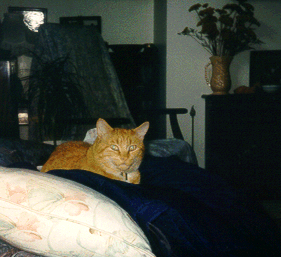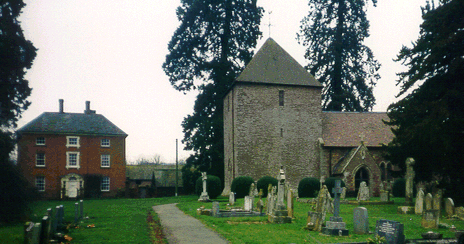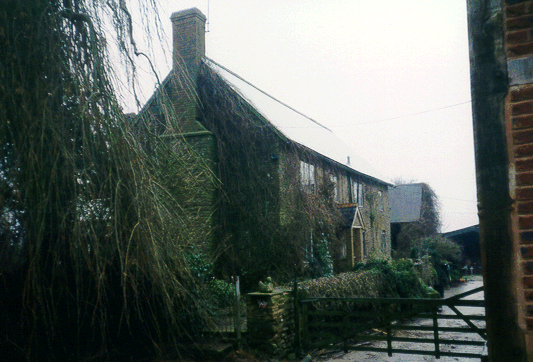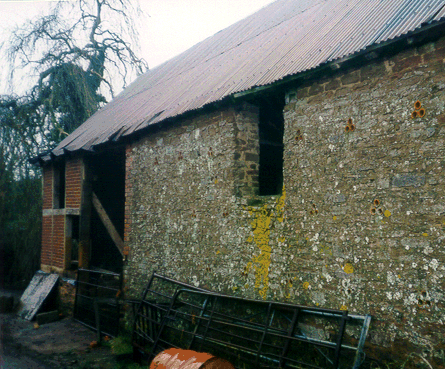A brief tour of Herefordshire in the footsteps of Wilford Woodruff.

W
hen I left for my visit to Herefordshire in February 1999 I was, as always, excited by the thoughts of what I might discover whilst researching in the County Record Office. This year however I had a further task. I was hoping to photograph the homes of some of the ROWBERRYs who had set off from Herefordshire to settle in America. In the case of one of them, Dunns Close, I did not even have a very good idea of its location! Removing my cat Scampi, who had sat himself down on my boxes of files, I loaded up my car and set off from home. My first stop was at the Worcestershire County Record Office, where I spent two days busily searching wills and parish registers trying to trace the elusive link binding the ROWBERRY and GOMERY families. The Saturday morning found me in Worcester Library's Local Studies section, my task for the day being to track down the site of Dunns Close. After an hour or so pouring over old maps I still had not located it. Hoping that it was still preserved as a cottage name I asked to see the modern Electoral Roll. Luckily I found an address given as Dunns Close, Suckley, so now all I had to do was to drive to Suckley and find it!After lunch I set out and after driving around Suckley for a while I stopped to ask a couple walking their dog if they knew where it was. They directed me straight to it, but I then discovered that I had left my camera behind. As it was very dull I decided to return the following day with my camera, hoping that the weather would be better. After this I went to Thornbury Church to see if I could look inside but discovered that it was locked. This is the normal way of things with most country churches now as vandalism and thefts often occur if churches are left unlocked. The notice in the porch indicated that there was to be a service there the next morning, so I decided to attend it.

On Sunday morning I set out for Thornbury in pouring rain, but at least I had remembered my camera! As you can see by the picture the church is very old and its isolated rural setting has preserved it well.
The members of the congregation all welcomed me and were very interested to hear of the links of the ROWBERRY family with the parish. The first time the name is mentioned in the parish registers is a marriage in 1575 between Richard ROWBERRY and Izott SMITH. Their descendents form my largest ROWBERRY Family Tree and are spread out all over the world, including most of the present variants of the name. Humphrey, their youngest son, was a Hop-planter according to his will made a hundred years later in 1675. He had obviously been at the forefront of developing the culture of hops in Herefordshire. Sadly today there are no hop-yards left in the parish, although they are still found in some parts of the county.

After taking my leave of Thornbury I went down the road crossing into a far-flung corner of Hatfield parish to photograph Bilfield Farm. This is believed to be the birth-place of Joseph ROWBURY who emigrated to Utah in 1873. Joseph had become a member of the Mormon Church in West Bromwich, Staffordshire where he was by that time living.
Today the farm is a poultry farm and the house is surrounded on three sides by large, modern poultry houses. It is bordered on the fourth side by the road, from where I took this picture. In front of the house is a yard around which are barns of various ages. The oldest which fronts the road is being renovated, and will probably soon be turned into another house.

Notice the old drainage tiles set in the walls to provide ventilation. This would have been very necessary in the days when the sheaves of corn would be stored in the barn until they were threshed, bit by bit during the winter months when there was little other work to be done on the farms.
The large double doors (now missing from this barn) had a double purpose. During the harvest they allowed the laden carts to be driven straight into the barn where they could be unloaded, and then driven on through. Although it is possible to reverse horse-drawn four-wheel vehicles, it is much easier not to have to bother! Later on they would again stand open, this time to allow the wind to help with winnowing the chaff from the grain as it was threshed.
From here I set out for Much Cowarne, follow me by clicking here.
URL= http://www.rowberry.org/footstp1.html
Last revised: 9th November 2000
© Polly Rubery 1999